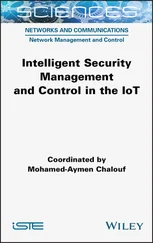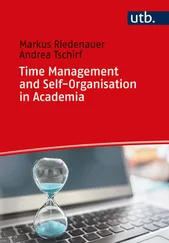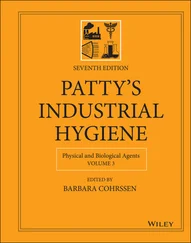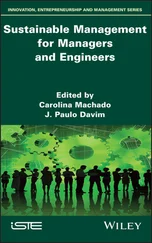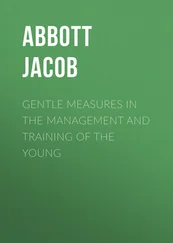Matthew Nonnenmann, Ph.D., CIH, Occupational and Environmental Health, College of Public Health, University of Iowa, Iowa City, IA, USA
Peggy Otum, BSc, JD, National American Industrial Hygiene Association (AIHA), Emergency Preparedness & Response Task Force, Fairfax, VA, USA
Scott J. Patlovich, DRPH, CIH, CSP, CBSP, CHMM, CPH, The University of Texas Health Science Center at Houston, Houston, TX, USA
Steven P. Pereira, CSP, National American Industrial Hygiene Association (AIHA), Emergency Preparedness & Response Task Force, Fairfax, VA, USA
Robert N. Phalen, Ph.D., CIH, University of Houston Clear Lake, Houston, TX, USA
Pamela A. Powell, National Fire Protection Association, Quincy, MA, USA
Charles F. Redinger, Ph.D., MPA, CIH, FAIHA, Institute for Advanced Risk Management, Harvard, USA
Paul G. Reinhart, Ph.D., DABT, Chief Environmental & Pollution Control Engineer (Retired), Mining & Metals Global Business Unit, Walnut Creek, CA, USA
Richard Rinehart, CPWR – The Center for Construction Research and Training, Silver Spring, MD, USA
Mary Ross, Ph.D., Chief Environmental & Pollution Control Engineer (Retired), Mining & Metals Global Business Unit, Walnut Creek, CA, USA
John P. Springston, CIH, FAIHA, ATC Group Services LLC, Bethpage, NY, USA
Lindsay Wichers Stanek Ph.D., MSPH, Chief Environmental & Pollution Control Engineer (Retired), Mining & Metals Global Business Unit, Walnut Creek, CA, USA
Sara L. Tamers, Ph.D., MPH, National Institute for Occupational Safety and Health, Centers for Disease Control and Prevention, Washington, DC, USA
Victor M. Toy, MPH, CIH, CSP, FAIHA, Insyst OH&S, San Mateo, USA
Vicki Villarreal, National American Industrial Hygiene Association (AIHA), Emergency Preparedness & Response Task Force, Fairfax, VA, USA
Gavin H. West, CPWR – The Center for Construction Research and Training, Silver Spring, MD, USA
Lori White, Ph.D., Chief Environmental & Pollution Control Engineer (Retired), Mining & Metals Global Business Unit, Walnut Creek, CA, USA
Herman Woessner, MS Safety, MA, CSP, CPEA, National American Industrial Hygiene Association (AIHA), Emergency Preparedness & Response Task Force, Fairfax, VA, USA
Industrial hygiene is an applied science and a profession. Like other applied sciences such as medicine and engineering, it is founded on basic sciences such as biology, chemistry, mathematics, and physics. In a sense it is a hybrid profession because within its ranks are members of other professions – chemists, engineers, biologists, physicists, physicians, nurses, and lawyers. In their professional practice all are dedicated in one way or another to the purposes of industrial hygiene: the anticipation, recognition, evaluation, and control of work‐related health hazards. The contributors to these volumes come from these professions.
Although the term “industrial hygiene” used to describe our profession is probably of twentieth century origin, we must go further back in history for the origin of its words. The word “industry,” which has a dictionary meaning, “systematic labor for some useful purpose or the creation of something of value,” has its English origin in the fifteenth century. For “hygiene,” we must look even earlier. Hygieia, a daughter of Asclepius who is god of medicine in Greek mythology, was responsible for the preservation of health and prevention of disease. Thus, Hygieia, when she was dealing with people who were engaged in systematic labor for some useful purpose, was practicing our profession, industrial hygiene.
Industrial Hygiene and Toxicology was originated by Frank A. Patty with publication of the first single volume in 1948. In 1958, an updated and expanded second edition was published with his guidance. A second volume, Toxicology, was published in 1963. Frank Patty was a pioneer in industrial hygiene; he was a teacher, practitioner, and manager. In 1946, he served as the eighth president of the American Industrial Hygiene Association. To cap his professional career, he served as director of the Division of Industrial Hygiene for the General Motors Corporation.
At the request of Frank Patty, George and Florence Clayton took over editorship of the ever‐expanding Industrial Hygiene and Toxicology series for the Third Edition of Volume I, General Principles , published in 1978, and Volume II, Toxicology , published in 1981–1982. The First Edition of Volume III, Theory and Rationale of Industrial Hygiene Practice, edited by Lewis and Lester Cralley, was published in 1979, with its second edition published in 1984. The ten‐book, Fourth Edition of Patty's Industrial Hygiene and Toxicology, edited by George and Florence Clayton, was published in 1991–1994, and the Third Edition of Volume III, Theory and Rationale of Industrial Hygiene Practice, edited by Robert Harris, Lewis Cralley, and Lester Cralley, was published in 1994. With the agreement and support of George and Florence Clayton, and Lewis and Lester Cralley, Robert Harris edited the fifth edition of Patty's Industrial Hygiene . Vernon Rose and I edited the sixth edition of Patty's Industrial Hygiene with the permission of Robert Harris.
It is now my privilege and honor to follow them and Frank A. Patty as the editor of the seventh edition of the Industrial Hygiene volumes of Patty's Industrial Hygiene and Toxicology . Each of the four volumes and the chapters in the seventh edition are a “stand alone.” Volume 1 covers Chemical Hazard Recognition, Volume 2 addresses Evaluation and Control of Chemical Hazards, Volume 3 considers aspects of Physical and Biological Agents, and Volume 4 considers Management and Specialty Areas of Practice. In addition, Volume 4 contains a complete index covering all four volumes.
Industrial hygiene has been dealt with very broadly in the past editions of Patty's Industrial Hygiene and Toxicology . Chapters have been offered on sampling and analysis, exposure measurement and interpretation, absorption and elimination of toxic materials, instrument calibration, industrial noise, ionizing and nonionizing radiation, heat and cold stress, pressure, lighting, control of exposures, ergonomics, hazardous wastes, and other vital areas of practice. These traditional areas continue to be covered in this edition. Consistent with the past history of Patty's, new areas of industrial hygiene concerns and practices have been addressed: robotics, sensors, social media, nanomaterials, infectious diseases, dermal effects of chemical exposures, mathematical modeling, control banding, product stewardship, construction health and safety issues, cannabis, new energy production, health care work settings, emergency and disaster response, sustainability, and fire safety.
Although industrial hygiene has been practiced in one guise or another for centuries, the most systematic approaches and the most esoteric accomplishments have been made in the past 50 or 60 years – generally in the years since Frank Patty published his first book. This accelerated progress is due primarily to increased public awareness of occupational health and safety issues and need for environmental control as is evidenced by Occupational Safety and Health, Clean Air, and Clean Water legislation at both federal and state levels.
Industrial hygienists know that variability is the key to the measurement and interpretation of workers' exposures. If exposures did not vary, exposure assessment could be limited to a single measurement, the results of which could be acted upon, and the matter filed away as something of no further concern. We know, however, that exposures change, and change is characteristic of the science and practice of our profession as well. We must be alert to recognize new hazards, we must continue to evaluate new and changing stresses, and we must evaluate performance of exposure controls and from time to time upgrade them. These volumes represent the theory and practice of industrial hygiene as they are understood by their chapter authors at the time of their writing. But, as observed by the Greek philosopher Heracleitus about 2500 years ago, “There is nothing permanent except change.” Improvements and changes in theory and practice of industrial hygiene take place continuously and are generally reported in the professional literature. Industrial hygienists, the practitioners, the teachers, and the managers must stay abreast of the professional literature. Furthermore, when an industrial hygienist develops new knowledge, he/she has what almost amounts to an ethical obligation to share it with others in the profession.
Читать дальше


